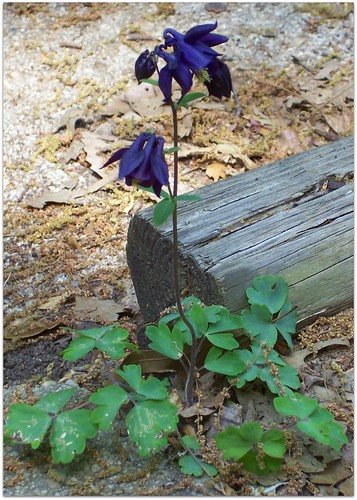This has fallen somewhat by the wayside, for reasons ranging from the fact that my mid-Atlantic patch of ground is not hospitable to many northern European plants, to my magpie's desire for shiny! despite the age of the cultivar, to a vague sort of guilt about neglecting native plants.
But I still love the flowery fields in mediaeval paintings, and it pleases more than is probably reasonable that this columbine is exactly the same as the ones in Hugo van der Goes' Portinari altarpiece of 1476.

Guillaume Apollinaire

Does this particular columbine have a name?
ReplyDeleteColumbines are supposed to symbolize folly, you know – but that association might have developed after commedia dell'arte.
In any case, this one is lovely.
Hi Cynthia,
ReplyDeleteThis particular columbine does not have a name; it's descended via re-seeding from some mixed Barlow columbines and seems to have reverted to a sort of Ur-type.
Interesting point about the association with folly. I suspect you're right that it's a later development and associated with the commedia dell'arte. During the Middle Ages, the flower was associated with the Holy Spirit (columbine < L. columba, dove). In the Portinari Altarpiece, the detail I linked above with the columbines is in the central panel, as part of a depiction of the nativity, with lilies and irises, both of which were associated with the Virgin.
Cool! I like the older association, which makes more sense etymologically. Didn't know about the iris, which I had always linked with the Nile.
ReplyDeleteSend me some seeds if you have a few extra. It's a dead-on match for the Portinari altarpiece. (Any relationship to Beatrice Portinari?)
It's already gone to seed for this year, but I can try to save some for you next year if you're still interested.
ReplyDeleteThe Portinari who commissioned the altarpiece, Tommaso, was an was an agent for the Medici bank in Bruges and was a member of the same family as Beatrice, but I don't know how closely they were related.
Please do! I'd be most grateful.
ReplyDelete